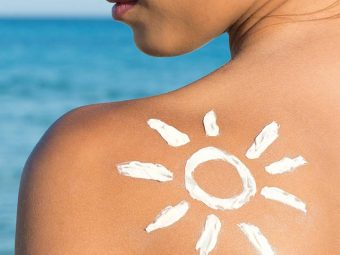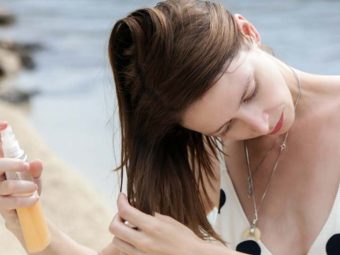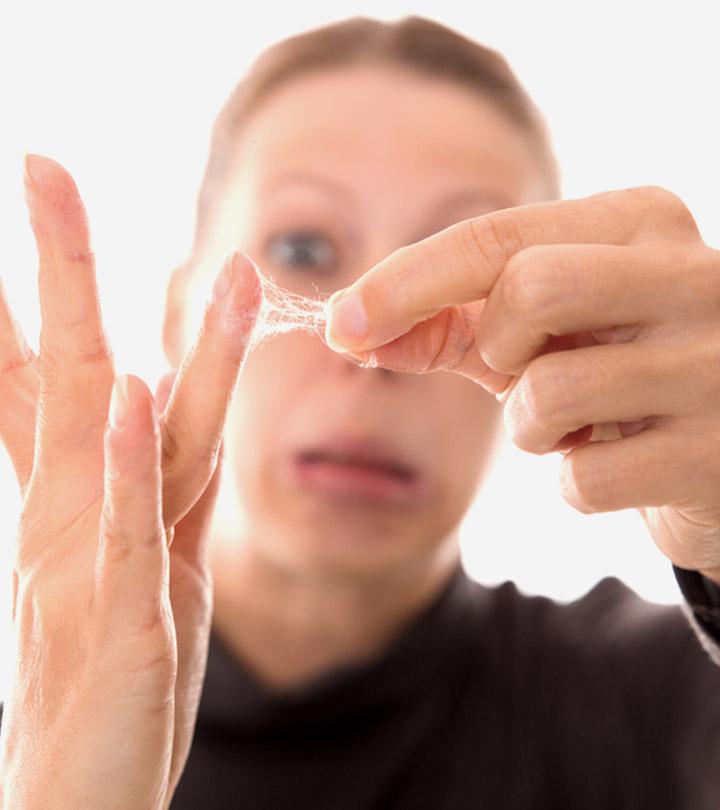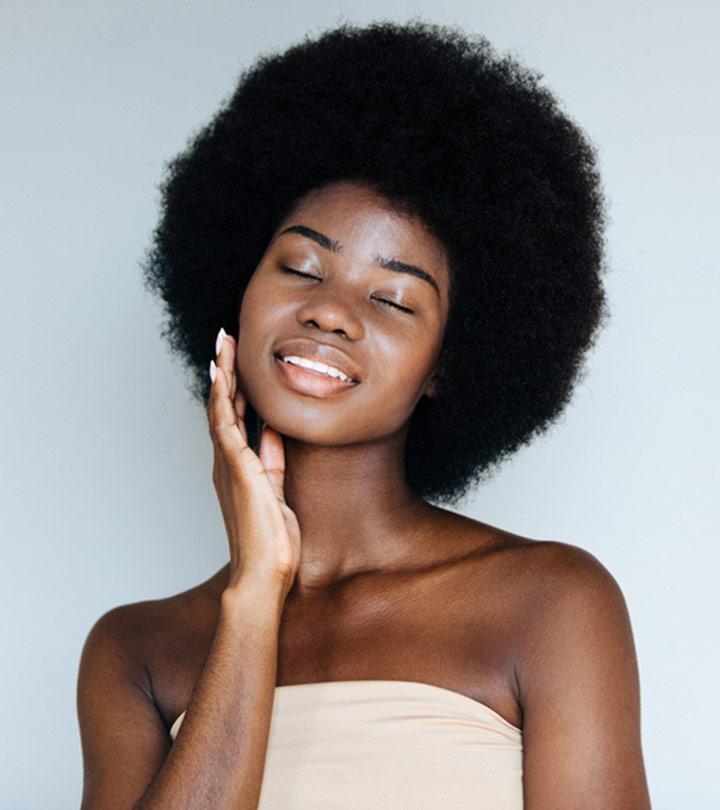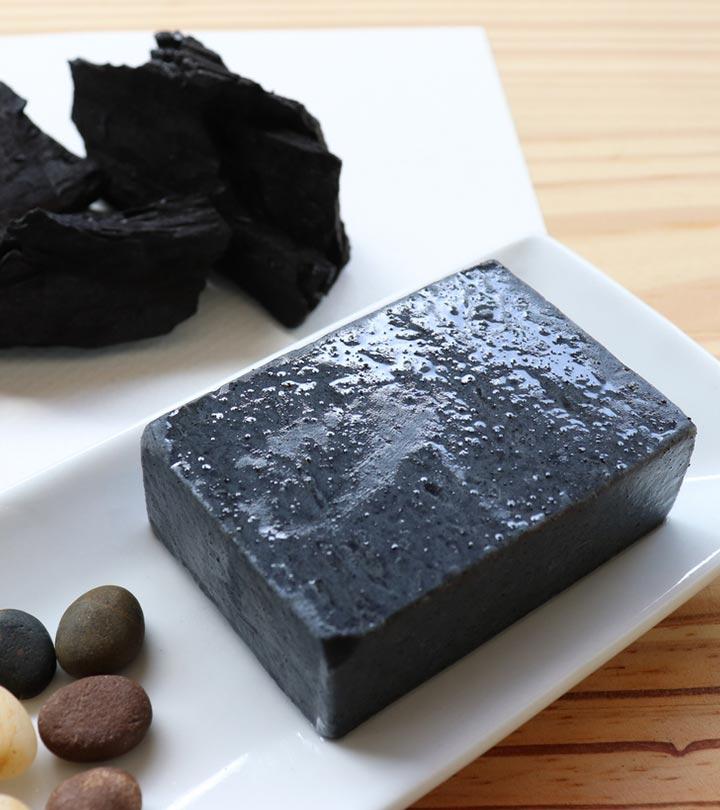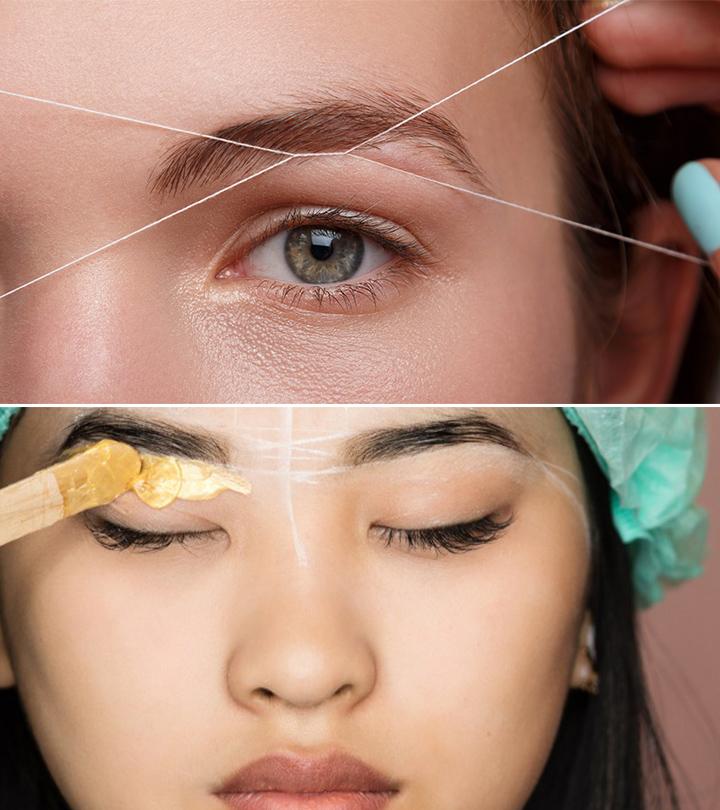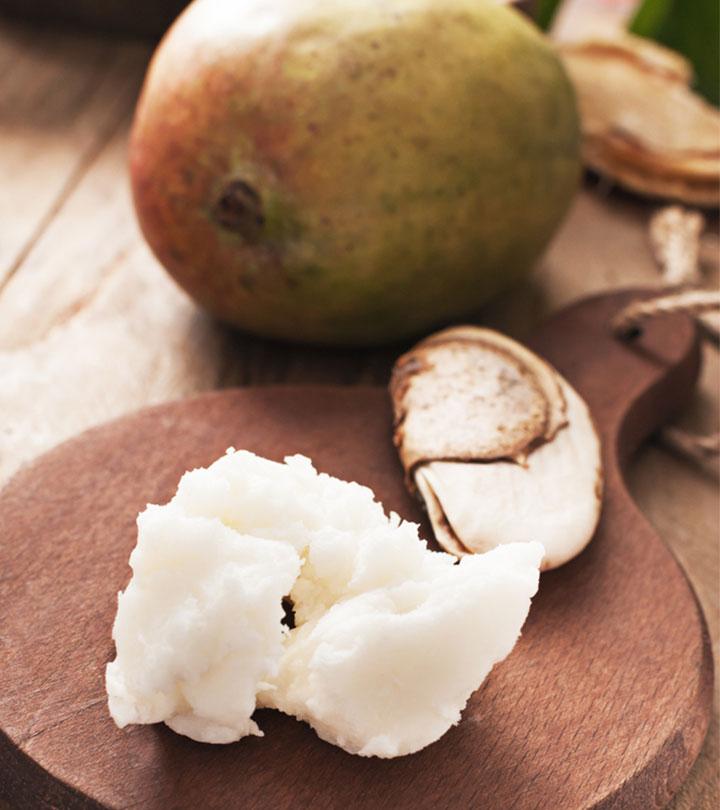Does Sunscreen Prevent Tanning? How To Protect Your Skin?
Choose sunscreens with high SPF spectrums, like 30-50, and water-resistant properties.

Image: Shutterstock
To many people, summer usually means lounging on the beach or by the pool, soaking up rays in pursuit of a beautiful tan. However, dermatologists advise that you apply sunscreen whenever you go outside. But does sunscreen prevent tanning?
Tanning can cause skin damage such as sunspots and wrinkles. If you think you can beat the system by obtaining your tan lines while wearing sunscreen, you’re probably right. However, you must consider the bigger picture! Keep reading to learn more about how to get tanned while wearing sunscreen.
In This Article
Why Is Sunscreen So Important?
The harmful UVA and UVB rays of the sun cause serious damage to your skin. UVA rays cause a higher production of free radicals that age your skin, forming age spots, dark spots, and wrinkles. UVB rays burn the skin (1).
Dermatologists recommend using sunscreen to protect your skin from the early signs of aging and sunburn. Mineral sunscreen coats the skin and reflects the sun rays off your skin to give you better protection, while chemical sunscreens ensure that only a limited amount of sun rays is absorbed by your skin.
A blogger shared her experience of using sunscreen daily on her blog: “It’s like having a personal bodyguard, shielding you from the dangers of the sun while you sashay through life with grace and elegance (i).” She added, “I did my research, and let me tell you, the sun is not to be trifled with. Those rays may seem friendly when they’re giving you that sun-kissed glow, but they’re secretly plotting against your skin’s elasticity and firmness .”
 Quick Tip
Quick TipSo, can you prevent your skin from getting tanned while wearing sunscreen? Find out below!
Can You Prevent A Tan With Sunscreen?

No, sunscreen does not prevent your skin from tanning. While sunscreen does protect your skin from UV rays, it does not stop your skin from changing color. Sunscreen acts as a filter that either absorbs, blocks, or reflects incoming UV rays. But, it cannot prevent 100% exposure to your skin. Tanning occurs when the skin produces melanin to prevent any further damage from occurring when it is exposed to sun rays (or a tanning bed) (1). It is a normal body response that occurs in people of all ages, skin types, or gender.
Learn how exactly your skin gets tanned in the next section.
How Does Your Skin Get Tanned?
Your skin contains cells that produce melanocytes when they are exposed to UV rays. These melanocytes produce melanin, which makes your skin darker on the surface. This pigment stops the UV rays from reaching your skin cells and deteriorating them. As the pigment piles up, your skin looks more tanned (1). The more threatened your skin is by UV rays, the more the pigment works to protect your skin. This is why the longer you stay in the sun, the tanner you look. Lighter skin tones don’t tan easily as their skin produces lesser amounts of melanin.
How Long Does It Take To Tan The Skin?
Some people can get tanned in under 30 minutes, while others take some hours. How quickly you tan depends on your skin type, weather conditions, and sun protection.
- If you are dark-skinned, you tan quicker as compared to medium- or lighter-skinned people.
- If the sun is hotter in your area, your skin can get tanned faster.
- If you are not wearing SPF or wearing a low-SPF sunscreen, your skin can get tanned quicker.
In areas at higher altitudes, people can get tanner or sunburnt faster since the sun rays are stronger.
- Areas with humid climatic conditions not only lead to a faster tan but also slow down the tan from fading.
- If you stay somewhere near the equator, you will tan faster due to the strength of the sun’s rays.
- Sitting under the sun without any shade will lead your skin to tan faster.
- People with darker skin tan faster due to the higher melanin content in their skin. Sun exposure causes the body to produce more melanin, making the skin even darker.
While a tan may give you that gorgeous sunkissed glow, it is not the best thing for your skin. Check out the damaging effects of tanning below.
Damaging Effects Of Sun Tanning
Dermatologists recommend using sunscreen with a higher SPF for better protection from sun damage. Sun damage can lead to DNA mutations which may cause skin cancer. It can also weaken the connective fibers in your skin, which leads to wrinkles, saggy skin, and sun spots. Here are all the damaging effects of sun tanning (1):
- It can damage the skin cells.
- It speeds up the appearance of visible signs of aging like fine lines and wrinkles.
- It can lead to serious medical conditions like skin cancer, melanomai XA severe type of skin cancer that can occur anywhere on the body and originates from melanin-producing cells. , and basal and squamous cell carcinomai XA form of skin cancer that develops in the epidermis (the outermost layer of skin) and commonly occurs in areas exposed to sunlight. .
- Every time you tan, your skin weathers with the damage building up.
- You can also incur actinic or solar keratosesi XA rough, scaly patch of skin caused by long periods of sun exposure that may develop into cancer. It commonly affects the elderly. , eye damage, and a weakened immune system from tanning your skin.
It is also a common myth that tanning your skin gives you the vitamin D dosage you need. But, that is not true!
Wondering how to protect your skin from all this sun damage? Find out in the next section.
In a study to understand the use of protective measures for the skin such as sunscreens among college-aged individuals, 673 students were surveyed of which 55% were male. Only 9.5% of them reported using sunscreen, and it was observed that its use did not vary by skin type but only by season.
How Do You Protect Your Skin From Sun Damage?
- Try self-tanning lotions and sprays that tan your skin without all the harmful effects of sun rays or a tanning bed.
- Choose darker shades of makeup to give your skin that perfect sunkissed color without actually exposing yourself to the sun.
- Wear sunscreen with high SPF, between 30 and 50, to protect your skin. For comparison, SPF 15 only protects your skin 93%. The higher the number, the better the protection.
- Opt for sunscreens that are water-resistant. This means that when you are sweating in the sun, your sunscreen will not melt away.
- Change your lifestyle and health habits. Drink more water, exercise more, and eat a more balanced and healthier diet.
- Wear sunglasses, hats, caps, and scarves to protect your skin from getting tanned when going outside.
- Wear waterproof sunscreen when swimming. Your skin can get tanned faster in the pool, so wearing sunscreen can slow down that process and protect your skin.
 Quick Tip
Quick TipUsing broad-spectrum sunscreen is the best way to fight sun damage. Learn all about it in the next section.
What Is Broad Spectrum Protection?

Broad-spectrum sunscreens protect the skin from both UVA and UVB rays. The higher the SPF, the better the sun protection. SPF measures how well a sunscreen protects the skin from UVB rays. Its measure is acquired by comparing the time it takes to tan the skin with and without sunscreen. Experts recommend using sunscreen with an SPF of at least 30. Sunscreens with SPFs greater than 50 provide only a small increase in UV protection.
It is important to note that sunscreen is often not applied thoroughly or thickly enough, and it can be washed off during swimming or sweating. As a result, it might be less effective than the SPF number suggests.
Frequently Asked Questions
Does sunscreen fade hyperpigmentation?
Yes, sunscreen can help protect your skin from further pigmentation and help fade the existing ones.
Does exfoliating remove tan?
Yes, gentle exfoliation can help remove pigmentation in the outer layer of skin and reduce the appearance of a tan.
Is it necessary to reapply sunscreen to prevent tanning?
Yes, reapply sunscreen every two to three hours as sunscreen can wear off over time with exposure to sweat or water. This can reduce its effectiveness and increase your risk of getting tanned.
Are there any specific areas of the body that are more prone to tanning even with sunscreen?
Yes, some areas like the shoulders, arms, back of the neck, legs, and feet are more prone to tanning and sun damage due to overexposure to the sun.
Are there any specific precautions or recommendations for using sunscreen to prevent tanning in children or individuals with sensitive skin?
Yes, children and individuals with sensitive skin should opt for a hypoallergenic and fragrance-free sunscreen, do a patch test before applying sunscreen, and reapply it after every 2-4 hours to ensure maximum protection.
Infographic: Negative Effects Of Skin Tanning
Who doesn’t love that sexy tan after a beach day! However, it is essential to be aware that tanning under the sun can do a lot of damage in the long run. Thankfully, there are a few ways you can prevent this damage and still look just as awesome. Check out the infographic below to learn the side effects of tanning and ways to prevent them.

Illustration: StyleCraze Design Team
Summer may mean getting a sunbath and tanning for many. But it can also cause skin damage and age spots if you do not wear sunscreen. Sunscreens help protect your skin from the sun’s harmful rays and prevent dark spots, wrinkles, sunburn, and aging spots. However, most people think of the same common question, does sunscreen prevent tanning or not? The answer is- no, it may not. Sunscreens protect your skin from harmful rays and may limit tanning to some extent, but they cannot prevent it. Still, you must wear sunscreen when you step out in the sun. Always choose sunscreen with an SPF of at least 30.
Key Takeaways
- Dermatologists advise using sunscreen to protect your skin from sunburn and early indications of aging.
- Sunscreen works as a UV filter, absorbing, blocking, or reflecting incoming UV radiation.
- Experts recommend sunscreen with an SPF of at least 30.
- While sunscreen protects your skin from harmful UV rays, it does not prevent tanning.
Protect your skin from the sun’s harmful rays with SPF 30 or higher while getting the tan of your dreams. Check out the video below to know more.
Personal Experience: Source
StyleCraze's articles are interwoven with authentic personal narratives that provide depth and resonance to our content. Below are the sources of the personal accounts referenced in this article.
i. Sunscreen: A Must-Have in Your Skincare Routinehttps://behot.medium.com/sunscreen-a-must-have-in-your-skincare-routine-6aca655bdb0f
References
Articles on StyleCraze are backed by verified information from peer-reviewed and academic research papers, reputed organizations, research institutions, and medical associations to ensure accuracy and relevance. Read our editorial policy to learn more.
- UV Radiation and the Skin
https://www.ncbi.nlm.nih.gov/pmc/articles/PMC3709783/










